#cesar chavez
Text

Joan Baez & César Chavez, September 1973 © Tony Korody.
104 notes
·
View notes
Text
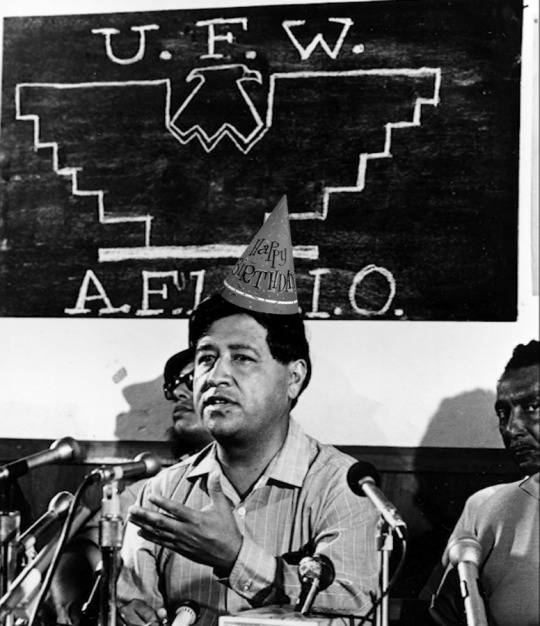
Happy birthday, Cesar Chavez! (March 31, 1927)
A founder and leader of the United Farm Workers union, Cesar Chavez was born in Yuma, Arizona, before his family joined many others seeking a better life in California during the Great Depression. Like the rest of his family, Chavez worked as an agricultural laborer before beginning to involve himself in labor organization and voter registration efforts. In the early 1960s, Chavez helped to found the predecessor to the UFW, and led strikes which helped to build both the union and Chavez's personal reputation in the labor movement. The most significant of these was the Delano grape strike, which lasted from 1965 to 1970, and resulted in victory for the union while cementing Chavez's pedigree as an effective labor leader. Chavez was able to effectively utilize consumer boycotts, direct action, and inter-ethnic solidarity to lead the UFW to victory. These tactics would become a hallmark of the UFW's strategies moving forward, and before long it began expansion efforts outside of California. He continued to lead the UFW until his death in 1993, and remains an icon of the American labor movement, although some of his positions, such as his opposition to undocumented immigants and support for Ferdinand Marcos and the Synanon cult, have experienced scrutiny and criticism.
"What we do know absolutely is that human lives are worth more than grapes and that innocent-looking grapes on the table may disguise poisonous residues hidden deep inside where washing cannot reach."
426 notes
·
View notes
Note
OK, I'll bite - what's the deal with the United Farm Workers? What were their strengths and weaknesses compared to other labor unions?
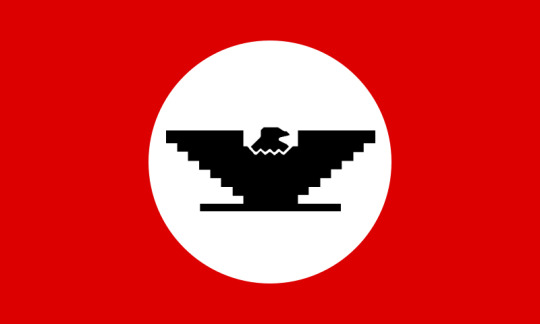
It is not an easy thing to talk about the UFW, in part because it wasn't just a union. At the height of its influence in the 1960s and 1970s, it was also a civil rights movement that was directly inspired by the SCLC campaigns of Martin Luther King and owed its success as much to mass marches, hunger strikes, media attention, and the mass mobilization of the public in support of boycotts that stretched across the United States and as far as Europe as it did to traditional strikes and picket lines.
It was also a social movement that blended powerful strains of Catholic faith traditions with Chicano/Latino nationalism inspired by the black power movement, that reshaped the identity of millions away from asimilation into white society and towards a fierce identification with indigeneity, and challenged the racist social hierarchy of rural California.
It was also a political movement that transformed Latino voting behavior, established political coalitions with the Kennedys, Jerry Brown, and the state legislature, that pushed through legislation and ran statewide initiative campaigns, and that would eventually launch the careers of generations of Latino politicians who would rise to the very top of California politics.
However, it was also a movement that ultimately failed in its mission to remake the brutal lives of California farmworkers, which currently has only 7,000 members when it once had more than 80,000, and which today often merely trades on the memory of its celebrated founders Dolores Huerta and Cesar Chavez rather than doing any organizing work.
To explain the strengths and weaknesses of the UFW, we have to start with some organizational history, because the UFW was the result of the merger of several organizations each with their own strengths and weaknesses.
The Origins of the UFW:
To explain the strengths and weaknesses of the UFW, we have to start with some organizational history, because the UFW was the result of the merger of several organizations each with their own strengths and weaknesses.
In the 1950s, both Dolores Huerta and Cesar Chavez were community organizers working for a group called the Community Service Organization (an affiliate of Saul Alinsky's Industrial Areas Foundation) that sought to aid farmworkers living in poverty. Huerta and Chavez were trained in a novel strategy of grassroots, door-to-door organizing aimed not at getting workers to sign union cards, but to agree to host a house meeting where co-workers could gather privately to discuss their problems at work free from the surveillance of their bosses. This would prove to be very useful in organizing the fields, because unlike the traditional union model where organizers relied on the NRLB's rulings to directly access the factory floors, Central California farms were remote places where white farm owners and their white overseers would fire shotguns at brown "trespassers" (union-friendly workers, organizers, picketers).
In 1962, Chavez and Huerta quit CSO to found the National Farm Workers Association, which was really more of a worker center offering support services (chiefly, health care) to independent groups of largely Mexican farmworkers. In 1965, they received a request to provide support to workers dealing with a strike against grape growers in Delano, California.
In Delano, Chavez and Huerta met Larry Itliong of the Agricultural Workers Organizing Committee (AWOC), which was a more traditional labor union of migrant Filipino farmworkers who had begun the strike over sub-minimum wages. Itliong wanted Chavez and Huerta to organize Mexican farmworkers who had been brought in as potential strikebreakers and get them to honor the picket line.
The result of their collaboration was the formation of the United Farm Workers as a union of the AFL-CIO. The UFW would very much be marked by a combination of (and sometimes conflict between) AWOC's traditional union tactics - strikes, pickets, card drives, employer-based campaigns, and collective bargaining for union contracts - and NFWA's social movement strategy of marches, boycotts, hunger strikes, media campaigns, mobilization of liberal politicians, and legislative campaigns.
1965 to 1970: the Rise of the UFW:
While the strike starts with 2,000 Filipino workers and 1,200 Mexican families targeting Delano area growers, it quickly expanded to target more growers and bring more workers to the picket lines, eventually culminating in 10,000 workers striking against the whole of the table grape growers of California across the length and breadth of California.
Throughout 1966, the UFW faced extensive violence from the growers, from shotguns used as "warning shots" to hand-to-hand violence, to driving cars into pickets, to turning pesticide-spraying machines onto picketers. Local police responded to the violence by effectively siding with the growers, and would arrest UFW picketers for the crime of calling the police.
Chavez strongly emphasized a non-violent response to the growers' tactics - to the point of engaging in a Gandhian hunger strike against his own strikers in 1968 to quell discussions about retaliatory violence - but also began to employ a series of civil rights tactics that sought to break what had effectively become a stalemate on the picket line by side-stepping the picket lines altogether and attacking the growers on new fronts.
First, he sought the assistance of outside groups and individuals who would be sympathetic to the plight of the farmworker and could help bring media attention to the strike - UAW President Walter Reuther and Senator Robert Kennedy both visited Delano to express their solidarity, with Kennedy in particular holding hearings that shined a light on the issue of violence and police violations of the civil rights of UFW picketers.
Second, Chavez hit on the tactic of using boycotts as a way of exerting economic pressure on particular growers and leveraging the solidarity of other unions and consumers - the boycotts began when Chavez enlisted Dolores Huerta to follow a shipment of grapes from Schenley Industries (the first grower to be boycotted) to the Port of Oakland. There, Huerta reached out to the International Longshoremen's and Warehousemen's Union and persuaded them to honor the boycott and refuse to handle non-union grapes. Schenley's grapes started to rot on the docks, cutting them off from the market, and between the effects of union solidarity and growing consumer participation in the UFW's boycotts, the growers started to come under real economic pressure as their revenue dropped despite a record harvest.
Throughout the rest of the Delano grape strike, Dolores Huerta would be the main organizer of the national and internal boycotts, travelling across the country (and eventually all the way to the UK) to mobilize unions and faith groups to form boycott committees and boycott houses in major cities that in turn could educate and mobilize ordinary consumers through a campaign of leafleting and picketing at grocery stores.
Third, the UFW organized the first of its marches, a 300-mile trek from Delano to the state capital of Sacramento aimed at drawing national attention to the grape strike and attempting to enlist the state government to pass labor legislation that would give farmworkers the right to organize. Carefully organized by Cesar Chavez to draw on Mexican faith traditions, the march would be labelled a "pilgrimage," and would be timed to begin during Lent and culminate during Easter. In addition to American flags and the UFW banner, the march would be led by "pilgrims" carrying a banner of Our Lady of Guadelupe.
While this strategy was ultimately effective in its goal of influencing the broader Latino community in California to see the UFW as not just a union but a vehicle for the broader aspirations of the whole Latino community for equality and social justice, what became known in Chicano circles as La Causa, the emphasis on Mexican symbolism and Chicano identity contributed to a growing tension with the Filipino half of the UFW, who felt that they were being sidelined in a strike they had started.
Nevertheless, by the time that the UFW's pilgrimage arrived at Sacramento, news broke that they had won their first breakthrough in the strike as Schenley Industries (which had been suffering through a four-month national boycott of its products) agreed to sign the first UFW union contract, delivering a much-needed victory.
As the strike dragged on, growers were not passively standing by - in addition to doubling down on the violence by hiring strikebreakers to assault pro-UFW farmworkers, growers turned to the Teamsters Union as a way of pre-empting the UFW, either by pre-emptively signing contracts with the Teamsters or effectively backing the Teamsters in union elections.
Part of the darker legacy of the Teamsters is that, going all the back to the 1930s, they have a nasty habit of raiding other unions, and especially during their mobbed-up days would work with the bosses to sign sweetheart deals that allowed the Teamsters to siphon dues money from workers (who had not consented to be represented by the Teamsters, remember) while providing nothing in the way of wage increases or improved working conditions, usually in exchange for bribes and/or protection money from the employers. Moreover, the Teamsters had no compunction about using violence to intimidate rank-and-file workers and rival unions in order to defend their "paper locals" or win a union election. This would become even more of an issue later on, but it started up as early as 1966.
Moreover, the growers attempted to adapt to the UFW's boycott tactics by sharing labels, such that a boycotted company would sell their products under the guise of being from a different, non-boycotted company. This forced the UFW to change its boycott tactics in turn, so that instead of targeting individual growers for boycott, they now asked unions and consumers alike to boycott all table grapes from the state of California.
By 1970, however, the growing strength of the national grape boycott forced no fewer than 26 Delano grape growers to the bargaining table to sign the UFW's contracts. Practically overnight, the UFW grew from a membership of 10,000 strikers (none of whom had contracts, remember) to nearly 70,000 union members covered by collective bargaining agreements.
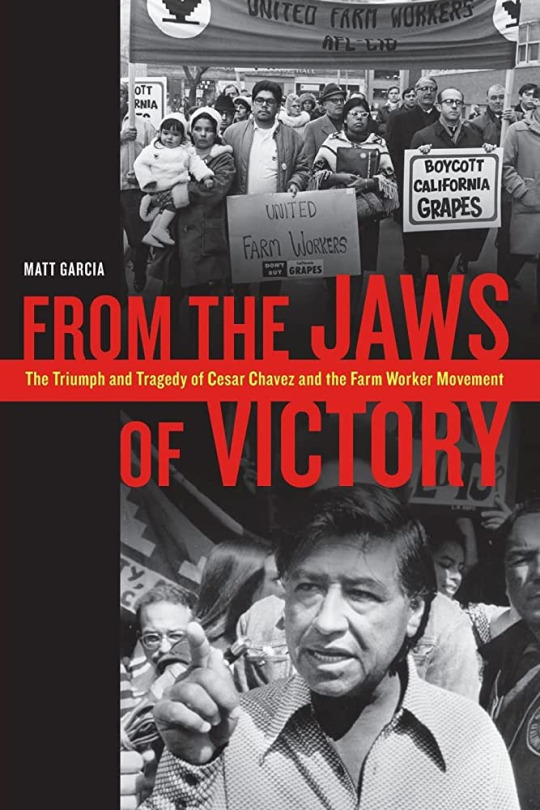
1970 to 1978: The UFW Confronts Internal and External Crises
Up until now, I've been telling the kind of simple narrative of gradual but inevitable social progress that U.S history textbooks like, the Hollywood story of an oppressed minority that wins a David and Goliath struggle against a violent, racist oligarchy through the kind of non-violent methods that make white allies feel comfortable and uplifted. (It's not an accident that the bulk of the 2014 film Cesar Chavez starring Michael Peña covers the Delano Grape Strike.)
It's also the period in which the UFW's strengths as an organization that came out of the community organizing/civil rights movement were most on display. In the eight years that followed, however, the union would start to experience a series of crises that would demonstrate some of the weaknesses of that same institutional legacy. As Matt Garcia describes in From the Jaws of Victory, in the wake of his historic victory in 1970, Cesar Chavez began to inflict a series of self-inflicted injuries on the UFW that crippled the functioning of the union, divided leadership and rank-and-file alike, and ultimately distracted from the union's external crises at a time when the UFW could not afford to be distracted.
That's not to say that this period was one of unbroken decline - as we'll discuss, the UFW would win many victories in this period - but the union's forward momentum was halted and it would spend much of the 1970s trying to get back to where it was at the very start of the decade.
To begin with, we should discuss the internal contradictions of the UFW: one of the major features of the UFW's new contracts was that they replaced the shape-up with the hiring hall. This gave the union an enormous amount of power in terms of hiring, firing and management of employees, but the quid-pro-quo of this system is that it puts a significant administrative burden on the union. Not only do you have to have to set up policies that fairly decide who gets work and when, but you then have to even-handedly enforce those policies on a day-to-day basis in often fraught circumstances - and all of this is skilled white-collar labor.
This ran into a major bone of contention within the movement. When the locus of the grape strike had shifted from the fields to the urban boycotts, this had made a new constituency within the union - white college-educated hippies who could do statistical research, operate boycott houses, and handle media campaigns. These hippies had done yeoman's work for the union and wanted to keep on doing that work, but they also needed to earn enough money to pay the rent and look after their growing families, and in general shift from being temporary volunteers to being professional union staffers.
This ran head-long into a buzzsaw of racial and cultural tension. Similar to the conflicts over the role of white volunteers in CORE/SNCC during the Civil Rights Movement, there were a lot of UFW leaders and members who had come out of the grassroots efforts in the field who felt that the white college kids were making a play for control over the UFW. This was especially driven by Cesar Chavez' religiously-inflected ideas of Catholic sacrifice and self-denial, embodied politically as the idea that a salary of $5 a week (roughly $30 a week in today's money) was a sign of the purity of one's "missionary work." This worked itself out in a series of internicene purges whereby vital college-educated staff were fired for various crimes of ideological disunity.
This all would have been survivable if Chavez had shown any interest in actually making the union and its hiring halls work. However, almost from the moment of victory in 1970, Chavez showed almost no interest in running the union as a union - instead, he thought that the most important thing was relocating the UFW's headquarters to a commune in La Paz, or creating the Poor People's Union as a way to organize poor whites in the San Joaquin Valley, or leaving the union altogether to become a Catholic priest, or joining up with the Synanon cult to run criticism sessions in La Paz. In the mean-time, a lot of the UFW's victories were withering on the vine as workers in the fields got fed up with hiring halls that couldn't do their basic job of making sure they got sufficient work at the right wages.

Externally, all of this was happening during the second major round of labor conflicts out in the fields. As before, the UFW faced serious conflicts with the Teamsters, first in the so-called "Salad Bowl Strike" that lasted from 1970-1971 and was at the time the largest and most violent agricultural strike in U.S history - only then to be eclipsed in 1973 with the second grape strike. Just as with the Salinas strike, the grape growers in 1973 shifted to a strategy of signing sweetheart deals with the Teamsters - and using Teamster muscle to fight off the UFW's new grape strike and boycott. UFW pickets were shot at and killed in drive-byes by Teamster trucks, who then escalated into firebombing pickets and UFW buildings alike.
After a year of violence, reduced support from the rank-and-file, and declining resources, Chavez and the UFW felt that their backs were up against a wall - and had to adjust their tactics accordingly. With the election of Jerry Brown as governor in 1974, the UFW pivoted to a strategy of pressuring the state government to enact a California Agricultural Labor Relations Act that would give agricultural workers the right to organize, and with that all the labor protections normally enjoyed by industrial workers under the Federal National Labor Relations Act - at the cost of giving up the freedom to boycott and conduct secondary strikes which they had had as outsiders to the system.

This led to the semi-miraculous Modesto March, itself a repeat of the Delano-to-Sacramento march from the 1960s. Starting as just a couple hundred marchers in San Francisco, the March swelled to as many as 15,000-strong by the time that it reached its objective at Modesto. This caused a sudden sea-change in the grape strike, bringing the growers and the Teamsters back to the table, and getting Jerry Brown and the state legislature to back passage of California Agricultural Labor Relations Act.
This proved to be the high-water mark for the UFW, which swelled to a peak of 80,000 members. The problem was that the old problems within the UFW did not go away - victory in 1975 didn't stop Chavez and his Chicano constituency feuding with more distinctively Mexican groups within the movement over undocumented immigration, nor feuding with Filipino constituencies over a meeting with Ferdinand Marcos, and nor escalating these internal conflicts into a series of leadership purges.
Conclusion: Decline and Fall
At the same time, the new alliance with the Agricultural Labor Relations Board proved to be a difficult one for the UFW. While establishment of the agency proved to be a major boon for the UFW, which won most of the free elections under CALRA (all the while continuing to neglect the critical hiring hall issue), the state legislature badly underfunded ALRB, forcing the agency to temporarily shut down. The UFW responded by sponsoring Prop 14 in the 1976 elections to try to empower ALRB, and then got very badly beaten in that election cycle - and then, when Republican George Deukmejian was elected in 1983, the ALRB was largely defunded and unable to achieve its original elective goals.
In the wake of Deukmejian, the UFW went into terminal decline. Most of its best organizers had left or been purged in internal struggles, their contracts failed to succeed over the long run due to the hiring hall problem, and the union basically stopped organizing new members after 1986.
#history#u.s history#labor history#ufw#united farm workers#cesar chavez#dolores huerta#trade unions#social history#social movements#unions
56 notes
·
View notes
Text

César Chávez at Safeway Boycott in Los Angeles, Oscar R. Castillo, early 1970s
#photography#vintage photography#vintage#black and white photography#cesar chavez#los angeles#california#oscar r castillo#1970s#american#mexican#chicano#boycott#civil rights#workers rights#labor rights
33 notes
·
View notes
Photo
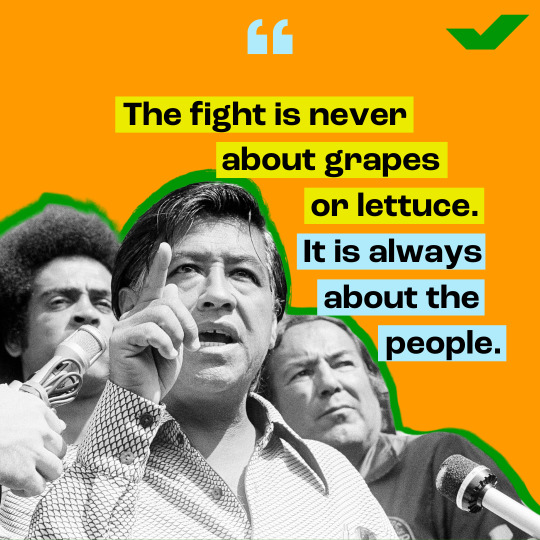
Today, we celebrate the life and legacy of labor rights activist César Chávez.
For more than 30 years, Chavez led the first successful farm workers union in American history. He inspired generations of people from all backgrounds and industries to organize, bargain, and expand opportunities for working people.
20 notes
·
View notes
Text

The CA State Library is closed today in honor of Cesar Chavez Day. A civil rights icon and labor leader, Chavez co-founded the National Farm Workers Association with Dolores Huerta. His rallying cry, "Sí se puede," inspired change, leading workers in the grape strike to secure higher wages, health plans, and safety measures. Since 1995, we commemorate his legacy on this day.
14 notes
·
View notes
Text

“…Is it so much to ask that the poorest people of the land have a measure of justice?” - #CesarChavez
"… ¿Es mucho pedir que las personas más pobres de la tierra tengan un poco de justicia?" - CésarChavez
Image description: A Latine mestizo man with brown skin and short black hair graying at his forehead looks out to the image's left with glasses in hand, speaking into a microphone. There is a hill or field behind him and wooden beams framing the photo.
— United Farm Workers (@UFWupdates) March 30, 2024
7 notes
·
View notes
Text

Alfredo Arreguín (Mexican American, 1935 - 2023), Good Harvest (Homage to Cesar Chevez)
12 notes
·
View notes
Text




Diego Luna with Pablo Cruz and Professor Héctor Calderón at the UCLA Chicano Studies Research Centere where he presented an advance screening of CESAR CHAVEZ.
Here's the video of the panel discussion:
youtube
9 notes
·
View notes
Text



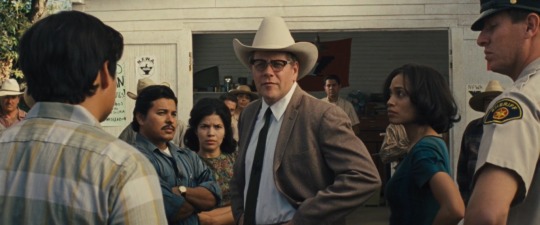

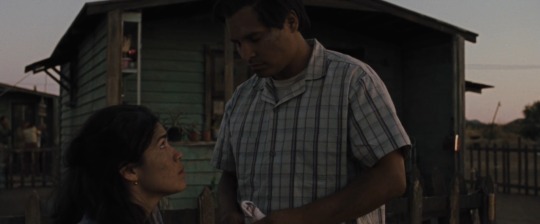
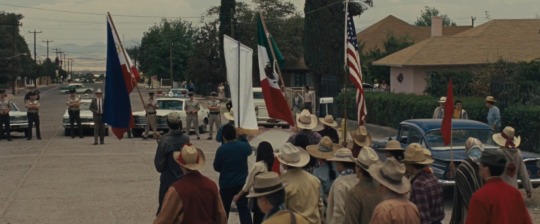
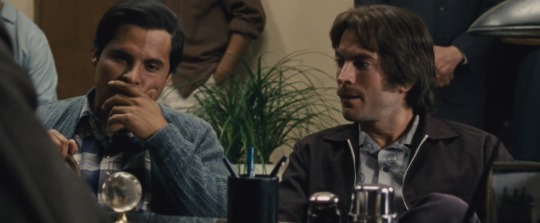
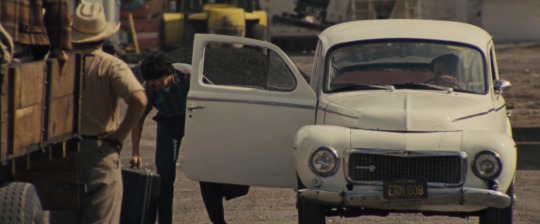

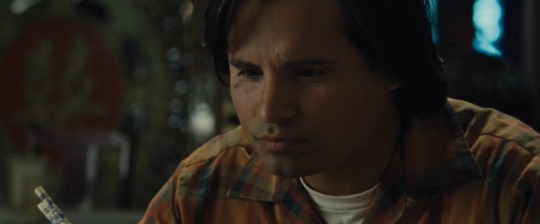
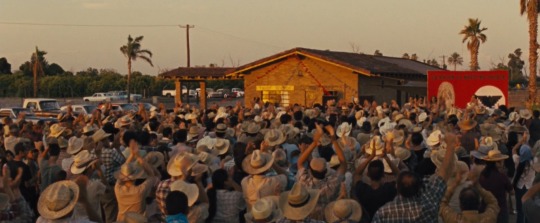
Cesar Chavez (2014), dir. Diego Luna.
#cesar chavez#cesar chavez 2014#2010s#diego luna#michael peña#rosario dawson#wes bentley#america ferrera#jacob vargas#michael cudlitz#yancey arias
8 notes
·
View notes
Text

¡Viva La Huelga! ¡Viva Los Campesinos!
Celebrating the life and work of Cesar Chavez, 2024.
#art#artists on tumblr#digital art#vintage#expiremental#design#ufw#cesar chavez#viva la huelga#viva los campesinos#popart#pop art#graphic design#expiremental music#poster art#poster design#vintage posters#united farm workers#si se puede#dolores huerta#philip vera cruz#united farm workers union#cesar chavez day#civil rights#us politics#politics#socialism#communism#leftism#late stage capitalism
4 notes
·
View notes
Text
The people who give you their food give you their heart.
(Cesar Chavez)
34 notes
·
View notes
Note
Was there any truth to Cesar Chavez's claims that undocumented migrants were being used to undercut the UFW? I doubt it was an organized plot, but there's been longstanding, unofficial US policy of doing little to effectively stop undocumented migrants from coming, and less to stop them from being employed when then come. Which creates a pool of people who can be employed in shit jobs for low pay and controlled through the threat of arrest and deportation.
No, I think it was a bunch of conspiratorial bullshit that led to violence between workers who would otherwise have been sympathetic to the UFW's cause. Huerta and the National Lawyers Guild and the Confederation of Mexican Workers and Bert Corona were in the right here, and Chavez was pretty clearly in the wrong.
15 notes
·
View notes
Text
reblog if your easter/transgender visibility day/cesar chavez day was great
and feel better soon if it was not :(
3 notes
·
View notes
Text
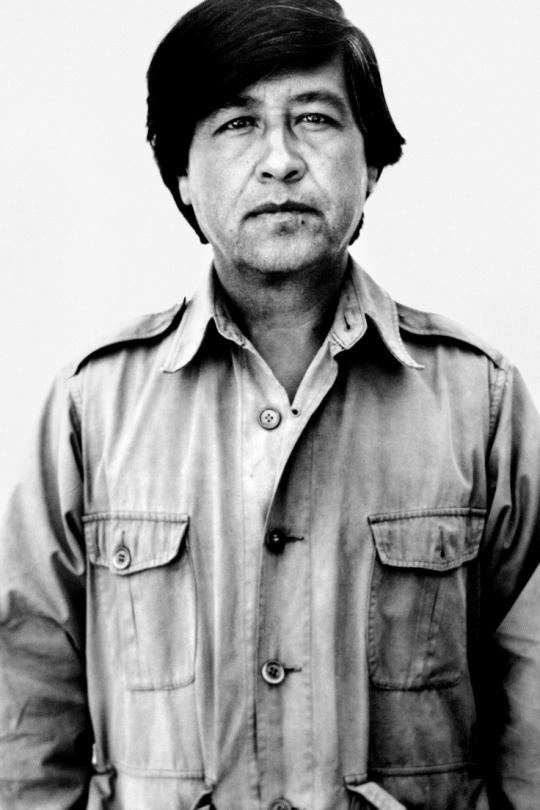
Cesar Chavez grew up on a farm in Yuma, Arizona with his two brothers and two sisters. His family owned a farm and a local grocery store. When Cesar was around eleven years old, hard times from the Great Depression caused his father to lose the farm, so his family packed up all they owned and moved to California to find work. Cesar's family became migrant workers. They moved from farm to farm in California looking for work. All the family members had to work, even Cesar. He worked in all sorts of different fields from grapes to beets, orchards and vineyards. The days were long and the work was very hard. Despite working so hard, the family barely had enough to eat.
Moving so often, Cesar didn't go to school much any more. In just a few short years he had attended thirty-five different schools. The teachers were tough on him. After graduating from the eighth grade, Cesar stopped going to school and the working conditions at the fields for Cesar and his family were horrible. The farmers seldom treated them like people. They had to work long hours with no breaks, there weren't any bathrooms for them, and they didn't have clean water to drink. Anyone who complained was fired.
When Cesar was nineteen he joined the navy, but he left after two years and returned home to marry his sweetheart Helen Fabela in 1948. He worked in the fields for the next few years until he got a job at the Community Service Organization (CSO). At the CSO Cesar worked for the civil rights of Latinos. He worked for the CSO for ten years helping register voters and work for equal rights. Eventually Cesar quit his job in the CSO to start a union of migrant farm workers and he formed the National Farm Workers Association.
One of Cesar's first major actions was to strike against grape farmers. Cesar and sixty-seven workers decided to march to Sacramento, the state capital. It took them several weeks to march the 340 miles. On the way there people joined them. The crowd grew larger and larger until thousands of workers arrived in Sacramento to protest. In the end, the grape growers agreed to many of the worker's conditions and signed a contract with the union. Over the next several decades the union would grow and continue to fight for the rights and working conditions of the migrant farmer.
Born Cesar Estrada Chavez on March 31, 1927 in Yuma, Arizona and died April 23, 1993 in San Luis, Arizona at the age of 66.
#cesar chavez#love#migrants#california#civil rights#farmers#grapes#latino#cso#union#arizona#great depression#strike#human rights#pesticides#mexican#farmworkers
2 notes
·
View notes
